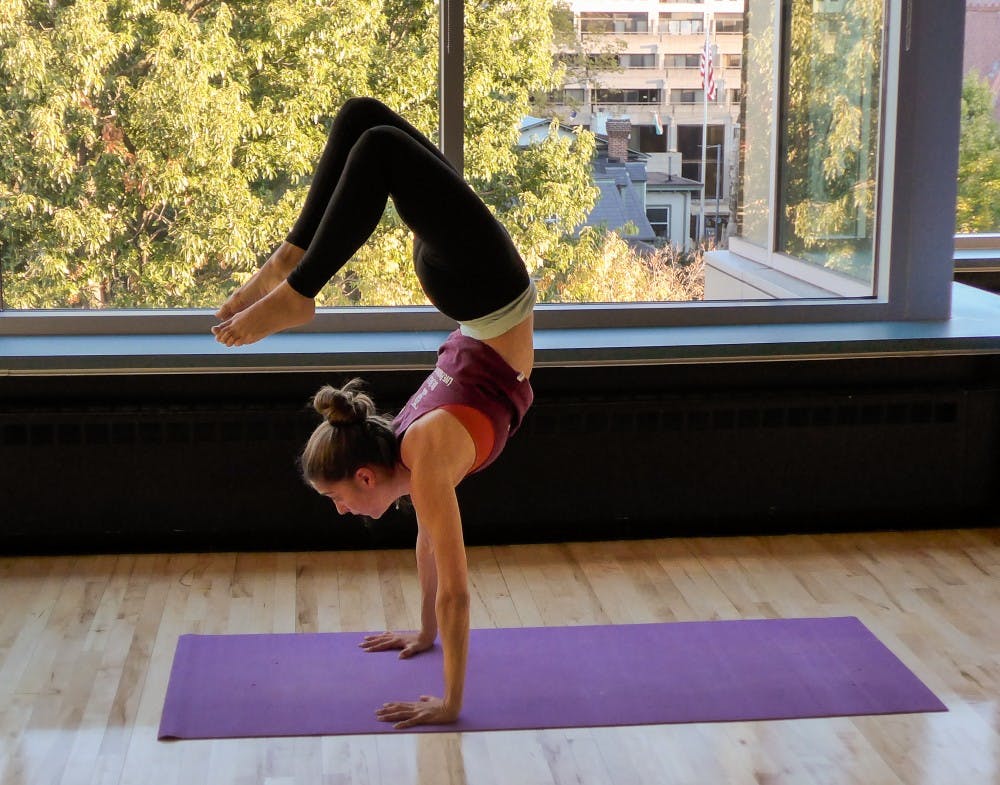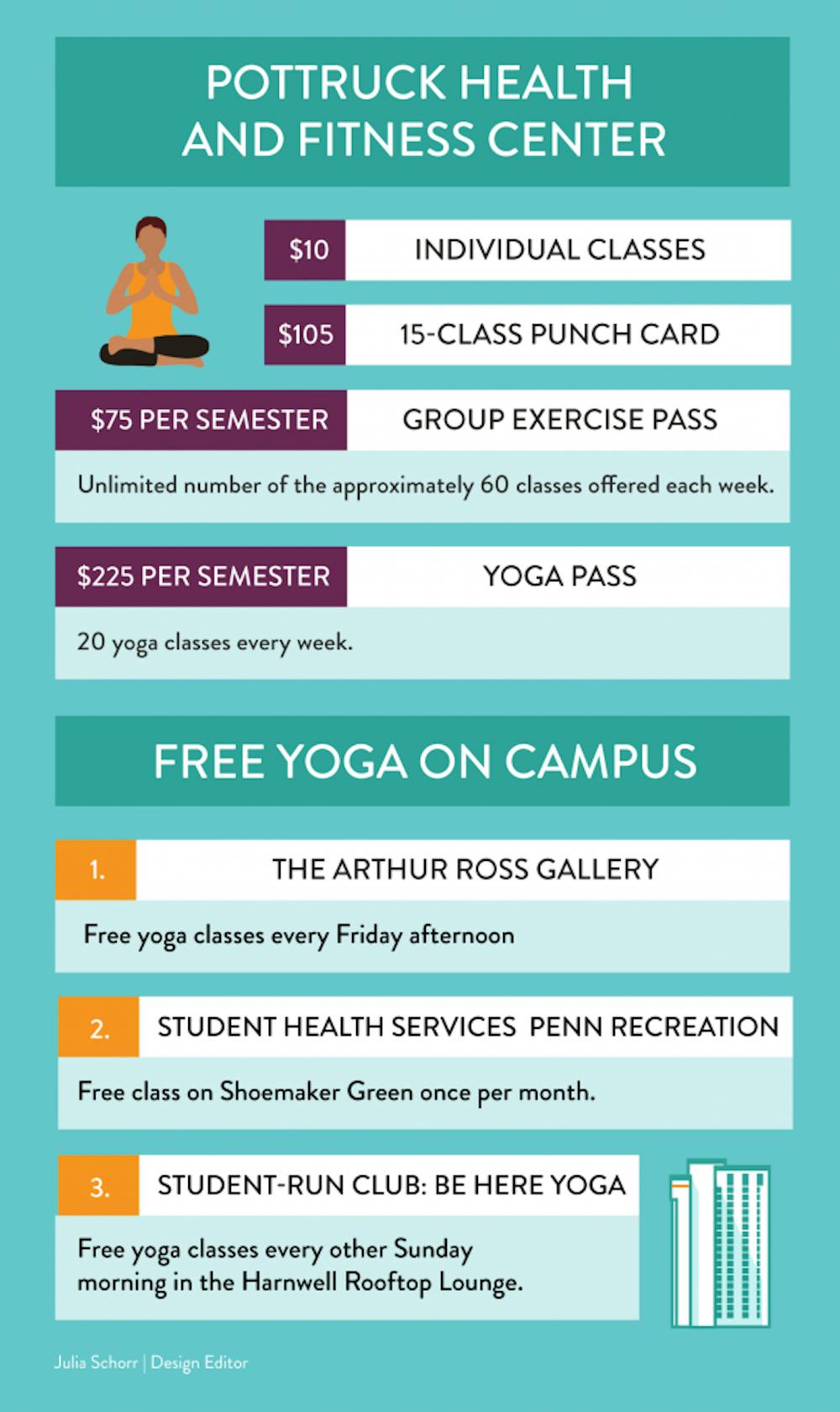
Yoga has become increasingly popular among adults in the United States for stress-reduction, but few low-cost options to practice yoga are available near campus.
The group exercise pass for the Pottruck Health and Fitness Center costs $50 per semester for undergraduates. It allows students to attend an unlimited number of the approximately 60 classes offered each week. A pass just for yoga costs $225 per semester and allows access to around 20 yoga classes every week. Students can also purchase a 15-class punch card for $105 or purchase individual, $10 yoga classes.
Janna Rothschild, the assistant director of fitness and wellness at Pottruck, said yoga classes are more expensive because instructors need a “much more intense and expensive certification process." She also said there is more student interest in the group exercise pass, but added that she did not know whether this was due to the price difference.
There are free options for yoga on campus, but none are offered as frequently as classes at Pottruck. The Arthur Ross Gallery offers free yoga classes every Friday afternoon, and the Student Health Service and Penn Recreation jointly offer a free class on Shoemaker Green once per month.
Student-run club Be Here Yoga offers free yoga classes every other Sunday morning in the Harnwell College House Rooftop Lounge. College senior and Be Here Yoga instructor Elena Carrigan, who practices individually in addition to Be Here Yoga, said yoga can benefit Penn students with busy schedules because of its emphasis on mindfulness.

“You're focusing on one thing instead of a thousand other things that may be going on in your life,” she said.
Lori Volpe, an instructor for the Penn Program for Mindfulness, recommends a regular yoga practice in order to make significant improvements in mental health.
“A little bit more [than every other week] might be more helpful,” Volpe said. She added that unlike individual yoga practice, classes “can bring in synchronicity and can have social benefits.”
Volpe originally trained to do yoga with veterans and sexual assault survivors, who she said benefit from yoga because it "can help people get back in the body when they have become dissociated.”
College senior Karen Zhao, who founded Be Here Yoga in 2015, said that while the cost of the Pottruck yoga pass can be financially prohibitive, it is still less expensive than classes at local yoga studios. She added that traveling to studios off-campus is inconvenient, but allows students to find classes that best fit into their schedules.
“Reasonably, you would expect to pay $100 a month [at a private yoga studio], but with that membership, you get unlimited classes every day,” Zhao said.
Robin Boudette, a licensed psychologist and instructor at Jefferson University Hospital’s Mindfulness Institute, suggests additional individual practice for those who can’t afford more frequent group classes.
“The classes are a way for people to learn what's helpful for them, but doing a little bit each day is more helpful than once every two weeks,” said Boudette, who worked for 14 years at Counseling and Psychological Services at Princeton University, where she founded the Mind Body Health Services Team.
Boudette said she saw many Princeton students who had physical problems, such as gastrointestinal issues and insomnia, resulting from stress and anxiety. Yoga helps reduce stress and related issues by decreasing the activity of the nervous system, she said.
Yoga can reduce stress because it touches on meditation, mindfulness and breathing, as well as physical poses, said Biz Magarity, founder of the Nava Yoga Center, a Philadelphia yoga studio that partners with orthopedic surgeons to treat mental and physical components of injuries. She emphasized the benefit of using yoga to gain self-awareness.
“Part of yoga is really a practice of yourself,” Magarity said. “It’s a way to empower individuals to see what works for them.”
The Daily Pennsylvanian is an independent, student-run newspaper. Please consider making a donation to support the coverage that shapes the University. Your generosity ensures a future of strong journalism at Penn.
Donate






